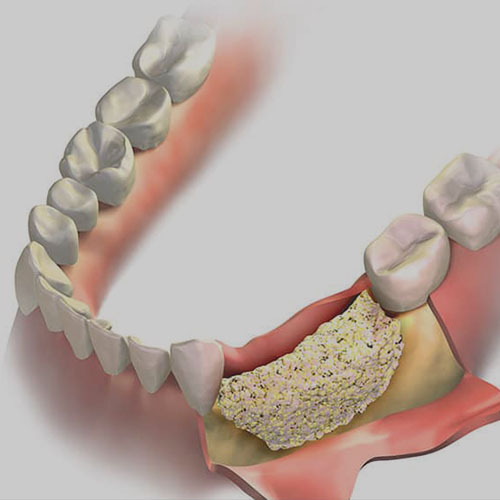Table of contents
As you review your options for replacing missing teeth, your family dental specialists Alex & Igor Khabensky may suggest dental implants. Implants require a solid base of bone to act as an anchor. If you have soft facial bones or insufficient bone thickness, the implant surgery could fail. A safe, routine procedure known as a dental bone graft may be the answer. It enhances your jawbone to ensure the best outcome for your future implant.
Bone grafting procedures have been in use for many years, originally to build up lost bone in those who had many missing teeth. When you lose your teeth, your jawbone starts dwindling in size and density. Bone grafting in the past worked to rebuild lost bone and provide a platform for denture wearers. With implants, the extensive bone dwindling process can be prevented.
Because present-day bone grafting targets much smaller areas for use in providing a biological pad for implants, dentists have developed procedures that are predictable, routine, and relatively painless. Whether using your natural bone or bovine composite bone, your Brooklyn cosmetic dentist has a minimally invasive technique to perform bone graft surgery that best fits your individual needs.
Bone grafting usually follows one of three procedures, depending on the location and requirements of the biological pad:

No matter which method your Brooklyn dentist employs, the end result is a new tooth. You get a greater ability to eat, talk, laugh and smile. Because implants are virtually indistinguishable from your natural teeth, a dental bone graft is a logical step if you have compromised bone strength and integrity.
Having a solid biological base to anchor an implant ensures the high success rate and longevity of your dental implant. The alternatives are either floating dentures with subsequent bone loss or no teeth at all. Neither is especially comfortable.
While it is surgery, the bone grafting procedure paves the way for a more solid, natural, and permanent solution to your missing teeth concerns. Due to the advanced nature and precision employed by your Brooklyn cosmetic dentist, the procedures have become much more predictable and pain-free. Voicing your expectations and concerns about the bone grafting procedure can help you and your dentist make the best choices for your continuing treatment.
Do you have any questions about the Dental Bone Graft Surgery Procedure in Brooklyn? For more information or to schedule an appointment with the best dentists Khabensky DDS of Family Cosmetic & Implants Dentistry of Brooklyn? Please contact our dental clinic for consultation with the dentists Alex and Igor Khabensky DDS.